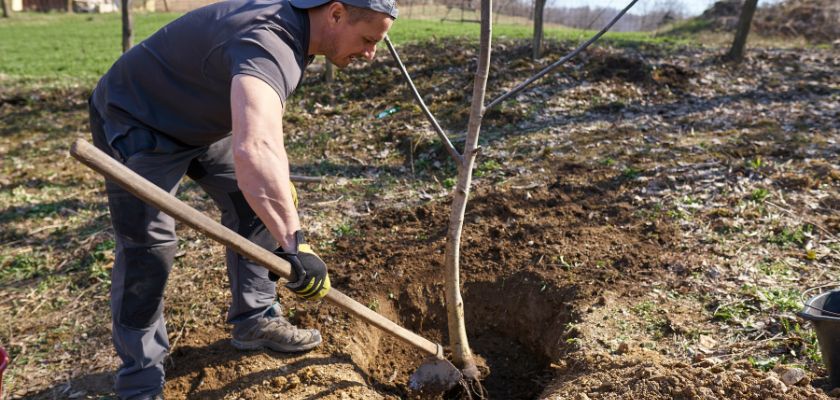In addition to being lovely additions to our landscapes, trees are living things that can be dangerous if not properly cared for. It is critical that we as custodians of our urban forests understand the significance of routine tree risk assessments carried out by licensed arborists. We explore the importance of tree risk assessments and how they improve the security and well-being of our surrounds in this extensive book.
Table Of Content
Understanding Tree Risk Assessments
What is a tree risk assessment?
A tree risk assessment is a systematic process conducted by certified arborists to evaluate the likelihood of tree failure and the potential consequences. It involves assessing various factors such as tree health, structural integrity, environmental conditions, and proximity to targets such as buildings, roads, and utilities.
Why is it Necessary?
Tree risk assessments are essential for identifying potential hazards posed by trees and implementing appropriate mitigation measures. By identifying and addressing risks proactively, property owners can prevent property damage, personal injury, and liability claims resulting from tree failures.
The Role of Certified Arborists
Certified arborists are trained professionals with specialized knowledge in tree biology, health, and risk assessment techniques. Their expertise enables them to accurately assess tree risk levels and recommend suitable management strategies to mitigate risks effectively.
Benefits of Tree Risk Assessments
Ensuring Public Safety
One of the primary benefits of tree risk assessments is the enhancement of public safety. By identifying hazardous trees and implementing risk mitigation measures, certified arborists help prevent accidents and injuries caused by falling limbs or tree failures.
Protecting Property and Infrastructure
Trees located near buildings, roads, and utilities can pose significant risks to property and infrastructure if they fail. Through thorough risk assessments, arborists can identify potential threats and recommend measures to minimize property damage and disruption to services.
Preserving Tree Health and Longevity
In addition to mitigating risks, tree risk assessments contribute to the overall health and longevity of trees. By identifying and addressing factors such as diseases, pests, and structural weaknesses, arborists can intervene early to prevent further deterioration and promote tree vitality.
Conducting a Tree Risk Assessment
Initial Inspection
The first step in conducting a tree risk assessment is to perform an initial inspection of the site and the trees in question. This involves visually inspecting the trees for signs of decay, damage, or other indicators of potential risk.
Diagnostic Testing
In addition to visual inspections, certified arborists may utilize diagnostic tools and techniques such as resistograph testing, sonic tomography, and aerial assessments to evaluate tree health and structural integrity more accurately.
Risk Evaluation and Management
Based on the findings of the inspection and diagnostic testing, arborists assess the level of risk posed by each tree and develop a comprehensive risk management plan. This plan may include recommendations for tree pruning, cabling and bracing, or tree removal where necessary.
TTTDallasTX: Your Partner in Tree Risk Management
Advanced Arborist Services in Dallas
At TTTDallasTX, we understand the importance of proactive tree risk management in preserving the safety and beauty of your property. Our team of certified arborists offers advanced tree risk assessment services tailored to your specific needs.
Comprehensive Risk Assessment
Using state-of-the-art equipment and industry-leading techniques, we conduct thorough risk assessments to identify potential hazards and develop customized risk management plans to mitigate risks effectively.
Expert Recommendations and Solutions
With years of experience in the field, our arborists provide expert recommendations and solutions to address identified risks while preserving the health and integrity of your trees. Whether it’s pruning, cabling, or tree removal, we ensure the safety of your property and the surrounding environment.
Final Wording
Tree risk assessments conducted by certified arborists are invaluable tools for safeguarding our green assets and ensuring public safety. By partnering with TTTDallasTX for advanced arborist services in Dallas, you can rest assured that your trees are in capable hands. Schedule a consultation today and take proactive steps towards a safer and healthier urban forest.
FAQ’s
Certified arborists have specialized training and expertise in tree biology, health, and risk assessment techniques. Their knowledge ensures accurate evaluations and effective risk management strategies.
The frequency of tree risk assessments depends on various factors such as tree species, age, health, and environmental conditions. As a general guideline, consider scheduling assessments every 1-3 years or after significant weather events.
Yes, tree risk assessments conducted by certified arborists provide valuable documentation of tree health and risk levels. This information can support insurance claims and demonstrate due diligence in mitigating risks.
While legal obligations vary by jurisdiction, property owners have a duty of care to maintain their trees and prevent foreseeable harm to others. Conducting regular tree risk assessments is a proactive measure to fulfill this duty and mitigate liability risks.
Certified arborists evaluate various factors during tree risk assessments, including tree species, health, structural integrity, environmental conditions, proximity to targets, and historical data such as past failures or pruning practices.
Absolutely, tree risk assessments can identify risks to historic or significant trees and recommend preservation measures such as selective pruning, structural support systems, or targeted risk mitigation strategies to ensure their longevity.

